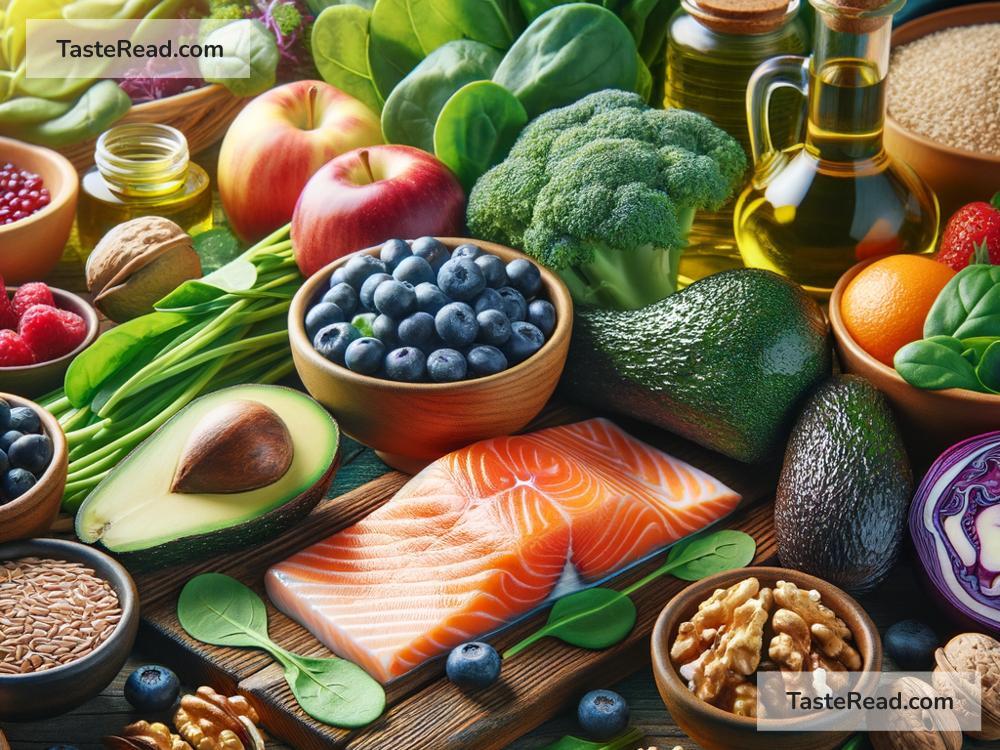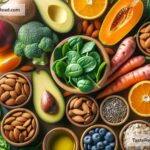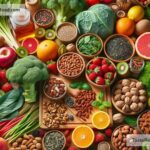Foods to Reduce Stroke Risk: Eat Your Way to Better Health
A stroke is a serious condition that occurs when blood flow to the brain is blocked or when a blood vessel in the brain bursts. It can cause lasting damage to the body and mind, and in some cases, it can even be fatal. While medical care and lifestyle choices play a big role in preventing strokes, the food you eat can also make a huge difference. Certain foods contain nutrients that improve circulation, protect your blood vessels, and lower harmful health risks like high blood pressure and cholesterol. In this blog, we’ll talk about everyday foods that can help reduce stroke risk—using simple language so everyone can understand.
1. Fruits and Vegetables: Nature’s Medicine
You’ve probably heard that fruits and vegetables are good for you, but did you know they can help prevent strokes? These colorful foods are packed with essential vitamins, fiber, and antioxidants. Antioxidants are like bodyguards for your cells, protecting them from damage caused by unhealthy things in the environment and your diet.
Key Picks:
- Leafy greens like spinach, kale, and lettuce are rich in potassium, which helps lower blood pressure. High blood pressure is one of the biggest causes of strokes.
- Berries, like blueberries, strawberries, and raspberries, are full of antioxidants that keep your blood vessels healthy.
- Citrus fruits, such as oranges and grapefruits, provide vitamin C, which may reduce inflammation and improve overall heart health.
Aim to fill half your plate with fruits and vegetables at each meal to support your body against stroke risk.
2. Whole Grains: Better Than Refined Grains
Whole grains are the healthier cousins of white bread and rice. They contain all parts of the grain, including the fiber-rich bran. Fiber is excellent for heart health because it helps lower cholesterol and keeps your blood vessels clean and strong.
Key Picks:
- Oats: Start your day with oatmeal to get a hearty dose of fiber.
- Brown rice: Swap out white rice for brown rice to enjoy extra nutrients.
- Quinoa: High in protein and fiber, quinoa makes a nutritious alternative to refined grains.
Choose whole grain bread, pasta, and cereals to better support both your heart and brain health.
3. Healthy Fats: Choose Quality Over Quantity
Not all fats are bad—your body actually needs healthy fats to function well! However, avoiding unhealthy fats is crucial for reducing stroke risk, as they can clog arteries and raise cholesterol levels. Healthy fats, on the other hand, can lower bad cholesterol and improve circulation.
Key Picks:
- Avocados: They’re full of heart-healthy fats and potassium.
- Olive oil: Replace butter with olive oil when cooking to reduce saturated fat intake.
- Nuts and seeds: Almonds, walnuts, chia seeds, and flaxseeds are full of omega-3 fatty acids that benefit your heart and brain.
Remember to eat fats in moderation—just a small handful of nuts or one tablespoon of olive oil is enough to provide benefits.
4. Lean Proteins: Skip the Grease
Proteins are important for building and repairing tissues in the body. However, greasy meats like bacon and sausage can increase your stroke risk due to their high levels of saturated fat and salt. Instead, focus on lean proteins that are low in fat and good for your overall health.
Key Picks:
- Fish: Salmon, mackerel, and trout are packed with omega-3 fatty acids, which protect your brain and heart from damage.
- Chicken (skinless): Skinless poultry is a better choice than red or processed meats.
- Beans and lentils: These plant-based proteins are low in fat and high in fiber, making them a great alternative to meat.
Limit your intake of processed meats and choose healthier cooking methods like grilling, baking, or steaming instead of frying.
5. Low-Sodium Foods: Cut Back on Salt
Too much salt in your diet can lead to high blood pressure, which is a major cause of strokes. Many packaged and processed foods contain hidden salt, even if they don’t taste salty. Stick to fresh, unprocessed foods whenever possible.
Key Picks:
- Herbs and spices: Use garlic, basil, rosemary, or turmeric to flavor your food instead of salt.
- Low-sodium soups or broth: Always check food labels for lower-sodium options.
- Fresh vegetables: Packaged vegetables may have added salt, so opt for fresh or frozen instead.
Be mindful of salty snacks like chips and pretzels, and try healthier alternatives like unsalted nuts or air-popped popcorn.
6. Green Tea: A Drink for Good Health
Green tea is light, tasty, and packed with antioxidants. Drinking green tea may help improve blood flow and reduce inflammation, lowering your risk of a stroke. Swap out sugary sodas and energy drinks for a cup of green tea to enjoy its many benefits.
Small Changes, Big Results
Reducing your stroke risk doesn’t mean giving up your favorite foods, but making smart choices can go a long way in protecting your health. Focus on eating fruits and vegetables, switching to whole grains, and replacing unhealthy fats with heart-friendly options like olive oil and nuts. Watch your salt intake, enjoy lean proteins, and opt for green tea over sugary drinks. These small changes, when done consistently, can make a huge difference over time.
Remember, food is medicine—and every bite you take can either hurt or heal your body. A healthier diet not only reduces stroke risk but also keeps your heart, brain, and overall body in great shape.
Take charge of your health today by choosing foods that support your body for years to come!


